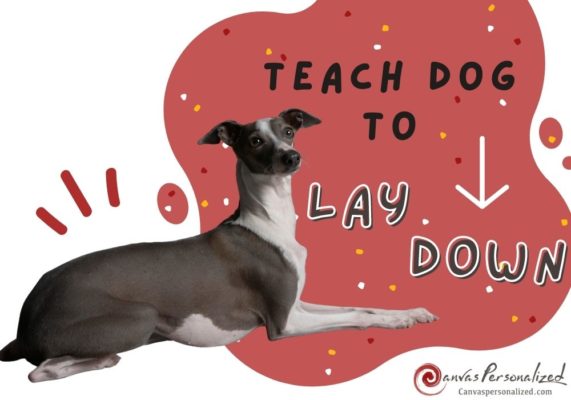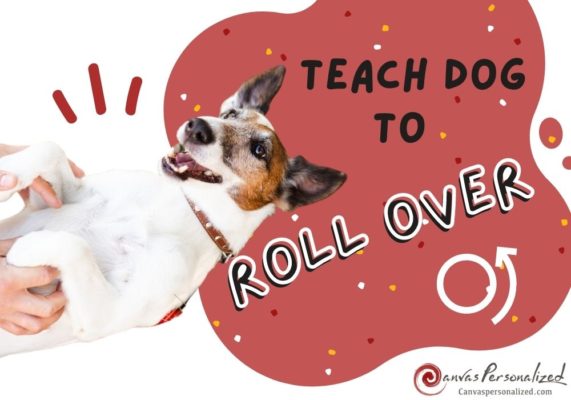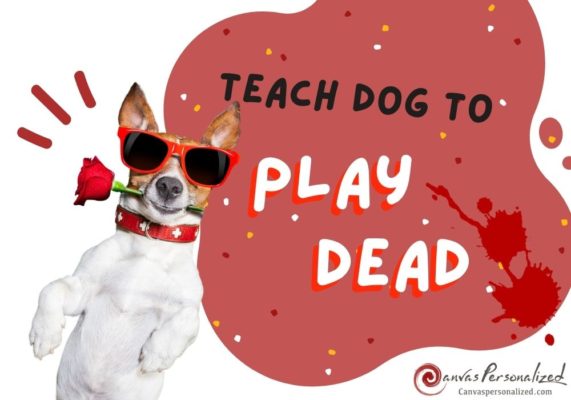Learning how to leash train a puppy is important to help with discipline and obedience and to keep your puppy safe when you take it for a stroll. But, if you aren’t sure how to start, everything you need to know about teaching a puppy to walk nicely on a leash is included here at Canvas Personalized.
The Importance Of Leash Training A Puppy
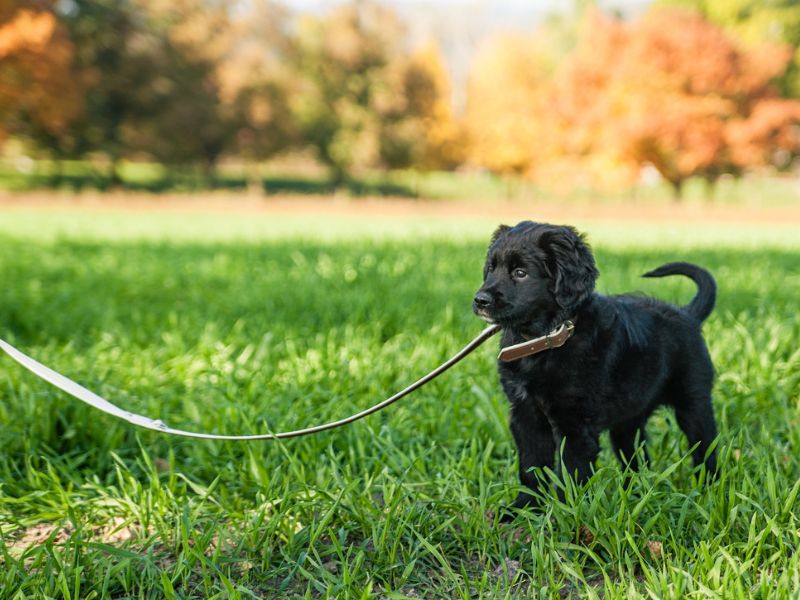
Leash training helps ensure the safety of your furry friend on daily walks, during which it can sniff around, make new friends, and have fun with you. If a puppy is not taught to walk politely and calmly on a leash, it can become a source of aggravation for both the owner and the dog.
Socialization: Dogs should not spend their entire lives indoors; they require regular walks and playtime. Despite their versatility, you shouldn’t overlook the importance of teaching your dog good manners while walking on a leash.
Learning how to train a puppy on leash is as essential as teaching it how to sit and stay. You’ll feel more confident taking your dog out in public, even if you’ll be in an area with other dogs.
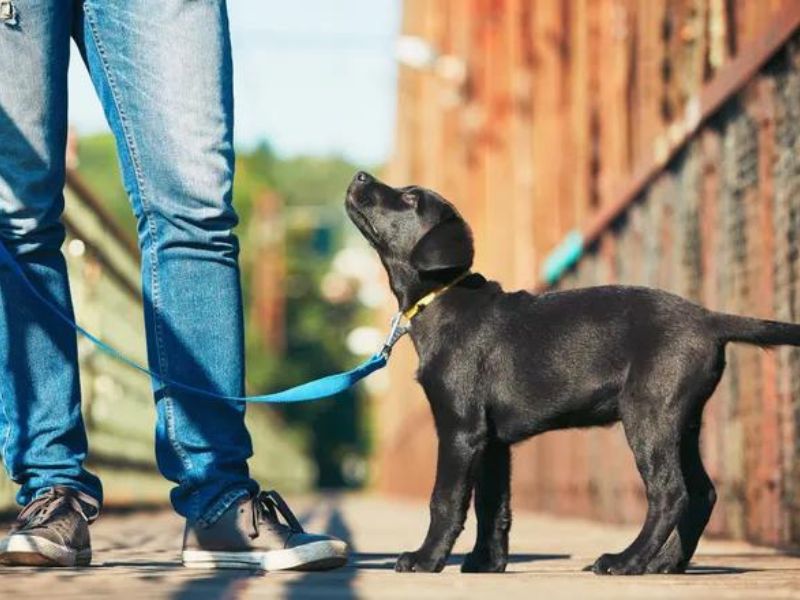
Safety: Mishaps can be avoided with appropriate leash training, such as when your dog is enticed to run into a busy roadway. The first time you leash your dog, it will probably pull like crazy.
So the best way to ensure a dog’s safety is to give it practical training. It will help protect you and your dog from damage, as dogs can injure themselves by pulling too hard on the leash.
Compliance: A sturdy leash is an absolute necessity. It should be used appropriately, mainly when leash restrictions exist, just like any other tool.
So learning how to leash train a puppy and following the rules are essential. You also make taking your dog to the groomer or veterinarian less hassle.
Puppies benefit from leash training because it allows them to explore new places and meet new people and other dogs. Ultimately, leash training lays the groundwork for a well-mannered and obedient dog.
What Age To Start Leash Training A Puppy?
The American Kennel Club recommends beginning formal training within the first few months of a puppy’s life. Puppies show increased receptivity to training between three and four months. So puppy leash training should begin no later than ten weeks of age but can start as early as four to six weeks. Getting your puppy used to being on a leash as soon as possible can make walks outside and housetraining a breeze.
Fortunately, leash training can begin in the comfort of your home or yard. Remember that puppies have short attention spans, and train them accordingly with short, frequent sessions. You’ll need to take things slowly to get your puppy to walk well on a leash.d
How To Train A Puppy On Leash
Checklist You’ll Need
Safety equipment:
- Collar and ID tags
- Harness or head halter
- Leash
- Treats and toys
Consistency and patience: Be consistent with training methods and expectations. Practice daily to build routine and consistency. Patience is key, as some puppies may take longer to train.
5 Steps To Start Leash Training A Puppy
Step 1: Start introducing the harness and leash to your puppy.
First, you must choose the right harness or leash for your puppy’s size that fits snugly and fastens around its back.

Note: Get the right fit by measuring their girth (the circumference of their chest) to avoid anything too loose (which could result in them slipping out) or too tight (which would be uncomfortable).
Next, show your pup the harness without any distractions and allow them to sniff while praising and offering treats. Remember to prevent your dog from associating this leash with negative feelings like scratching or fighting.
Step 2: Put the harness on your puppy.
Put the harness on your puppy, but just for a short time. Reward your dog with goodies and praise while you put the harness on, and then take it off again.
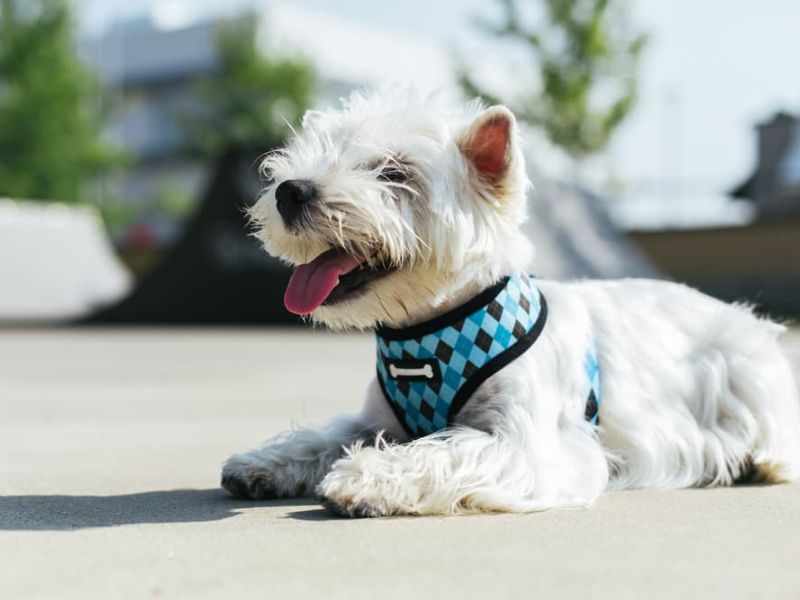
If your puppy seems happy in the harness after a few trials, you can gradually extend how long they wear it. The best time to put the harness on your dog is before feeding or training time (preferably when goodies will be involved).
Step 3: Start walking with small steps.
You can begin training walks together when your dog is used to walking while harnessed and leashed. Remember to keep the dog on a slack leash and ensure the collar or head halter isn’t too heavy or irritating.
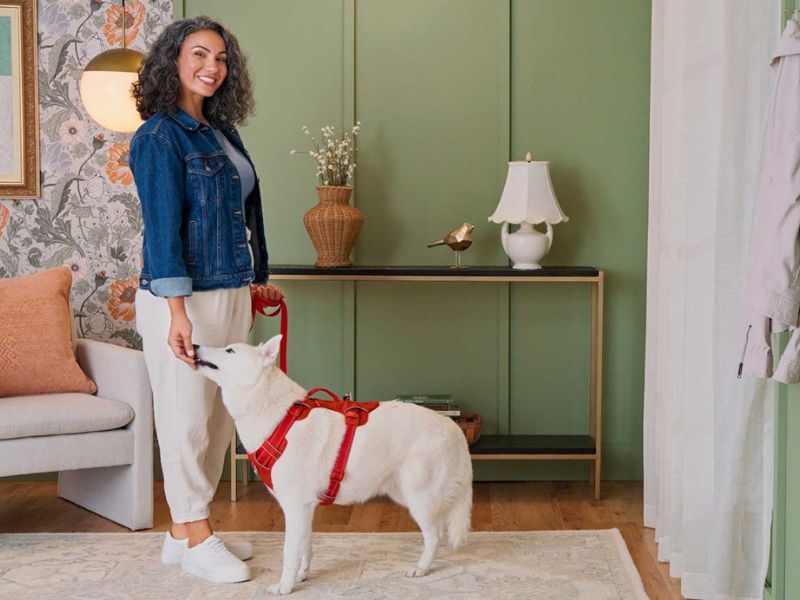
Fasten the leash to your dog’s collar, show it the treats, and reward it for staying close to you. Then, gradually increase the distance between you and your puppy, rewarding it with a treat whenever it returns to you.
To get your puppy to walk with you, practice the step, treat, and praise method in an area with few distractions. Give the treat down at your puppy’s height so it won’t have to jump up to receive it.
Step 4: Practice with the “come” command.
Training your dog on a leash is a great way to reinforce the lessons they have learned in basic obedience. Sit, stay, come, and lie down are good verbal cues. Asking your dog to come while on the leash will alleviate potential problems with pulling or charging ahead. It’s also a safe environment to practice teaching your dog to come when called.

To encourage your dog to come when called, toss a treat a little distance from you while he is on a leash. You may turn it into a game by throwing treats and having the dog return for more.
Step 5: Leash training a puppy in different places
When your puppy is confident enough to walk with you on a leash indoors, it is time to get into more challenging environments. Learning how to leash train a puppy in a more distracting place (like the backyard) until they can be relied upon there.
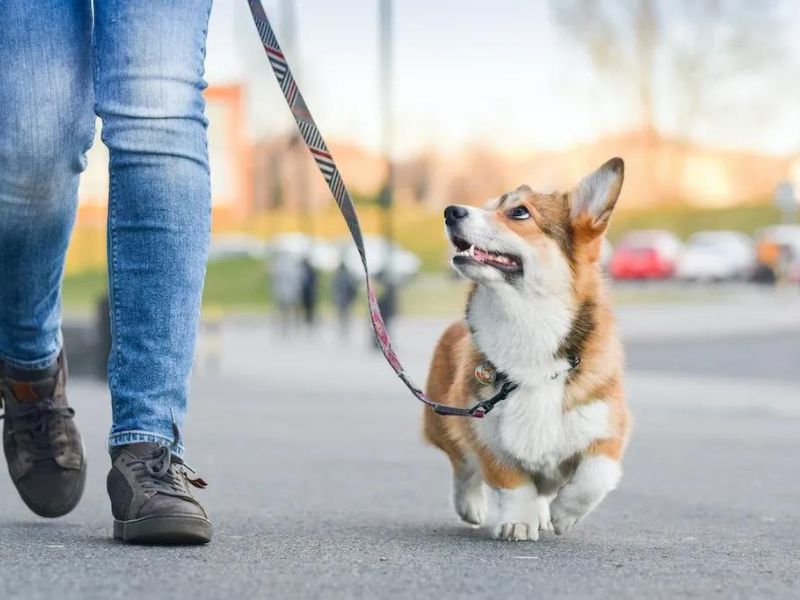
Consider taking your puppy for walks during potty breaks if it prefers to relieve itself outside (this is a double win, allowing you to work in more leash practice and training your dog to go potty in a specific spot).
You may try going faster or in a different direction while keeping your dog nearby. Then treat your dog with praise and rewards whenever it comes to sit or stand close to you.
Note: Young puppies have trouble concentrating. So keep your distance and pace within the range so they can walk pleasantly without pulling on the leash.
>>>Let’s check out the easy step to train your puppy to go potty in the right place!
Step 6: How to train a dog to walk on a leash beside you
Having your dog on one side or the other may be necessary. Walking with your dog by your side rather than in front of you will allow you to direct his pace and behavior.
To train your dog to walk on a leash by your side, reward them whenever they go in the desired direction. If your dog starts pulling in another direction, gain their attention, attract them back to the side you want them to walk on, and then reward them with the treat.
Leash Training TroubleShoothing
You may be doing great while learning how to leash train a puppy at home, but you may run into trouble as it ages, visiting new places and encountering new distractions. It would be best if you taught him to walk loosely behind you so that he can enjoy your walks together more.
How to train a puppy to walk on a leash without pulling
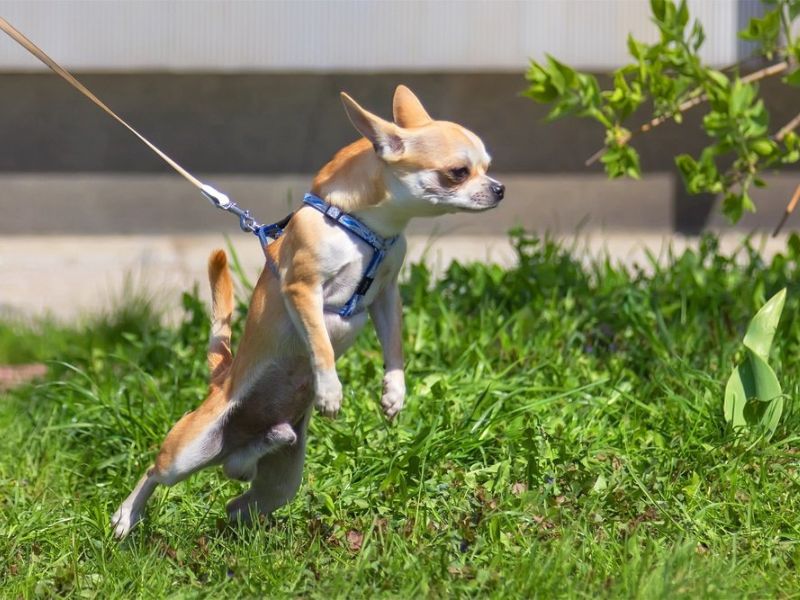
One of the most common issues is when your puppy pulls on the leash. This can be frustrating and dangerous, especially if your puppy is strong and can pull you off balance.
When your dog begins to tug oppositely, stop until it returns to you. Do not drag your dog behind you or yank on the leash. Reward them with treats and praise when they return to your side.
Tip: Don’t wait to give treats until your dog stops tugging. Let’s give them a treat when they’re close to you but not pulling.
Lunging behavior
Take preventative measures if your dog chases another dog or a car while taking a stroll. To prevent your dog from lunging, move farther away from the target and try to divert his attention with a treat.
Fear
Most puppies can fear the leash, making the training process challenging. They may cower, whine, or even run away when you try to put the leash on them.
If your pup barks
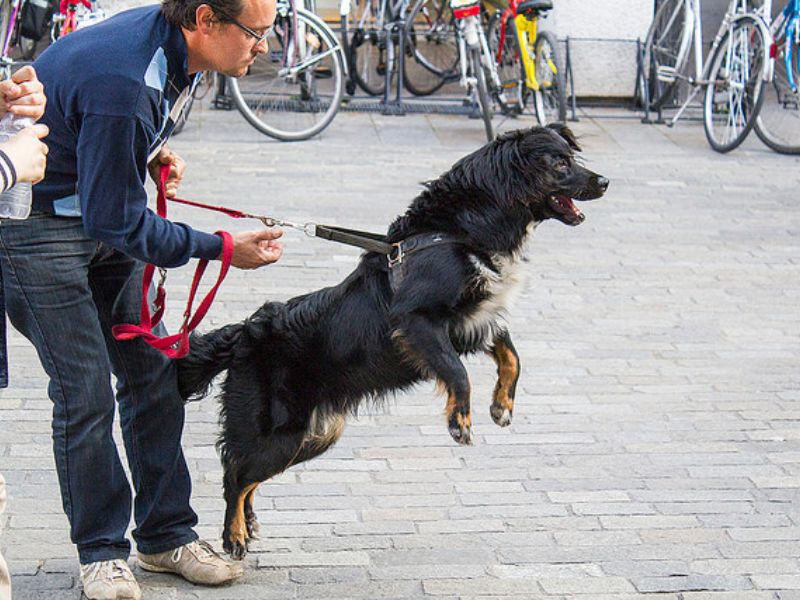
While walking, some dogs can’t help but bark at passing other dogs. If this continues to be an issue, follow the same steps as if your dog were lunging: putting distance between yourself and the other dog and rewarding good behavior before your dog barks. This will teach your dog to look at you instead of the other dog whenever he sees one.
Distractions
Puppies are easily distracted, and leash training can be difficult with too many distractions. Your puppy may want to explore or play, making it challenging to keep them focused on the task at hand.
So all you need to do is the following:
- Choose a quiet, low-distraction area for training.
- Use high-value treats
- Keep training sessions short.
- Use a training aid.
- Increase distractions gradually.
Treats and problem-solving will become less necessary as your puppy ages, but having them available at all times will allow you to reinforce how to teach a puppy to walk on a leash.
Tips for Successful Leash Training A Puppy
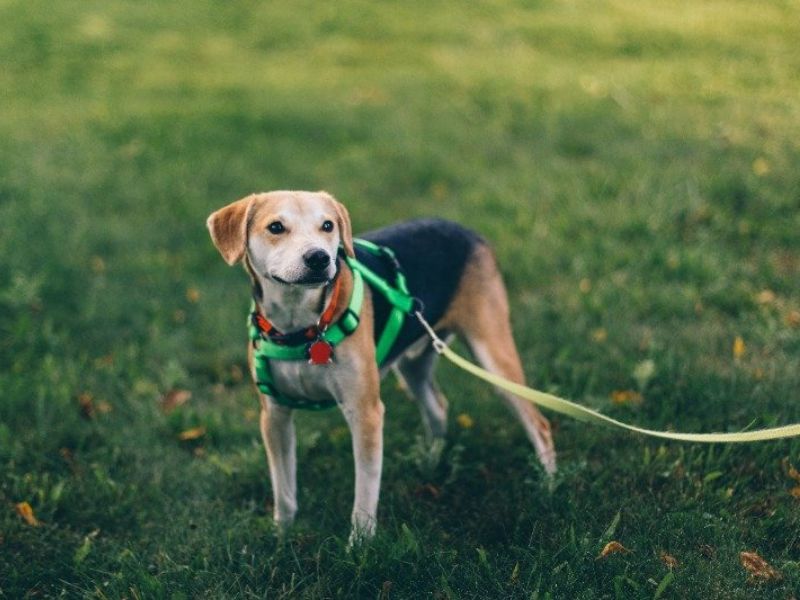
Here are some pointers for learning how to leash train a puppy:
Start soon: Start your puppy’s leash training as quickly as possible, ideally between 8 and 12 weeks.
Use a comfortable leash and collar: Make sure your leash and collar are suitable for your dog and easy on his neck. Avoid using retractable leashes if at all possible.
Use positive reinforcement: Use positive methods such as treats and praise to encourage your dog to walk well while being led. This reinforces appropriate behavior and prepares your puppy for successful leash training.
Keep training sessions short: Leash training sessions should be brief and frequent because puppies have short attention spans. Begin your puppy’s walking experience with short jaunts and lengthen them as they grow accustomed to the activity.

Be patient: Learning how to leash train a puppy requires persistence and time. You should expect some resistance or pulling at first from your puppy when you put on the leash and collar.
Reduce distractions: Avoid taking your puppy for walks with other dogs and humans in distracted places. Because of this, you and your puppy may have a more challenging time learning how to train a puppy on a leash.
A consistent training method: Select a training approach that works for you and your puppy, and stick with it throughout the training process. When it comes to training on a leash, consistency is essential.
Following these guidelines, you and your puppy can enjoy many pleasant walks together.
>>>Further reading:
- 10 Crate Games For Dogs to Keep Your Pup Happy & Entertained
- Bell Training For Dogs: A Step-by-Step Guide To Potty Train and More
- How To Calm Down A Dog: 19 Effective Ways & Tips Must-Try
Discovering how to leash train a puppy is an important first step in socializing and protecting your dog in public. Patience, regularity, and reinforcement are needed. You can build trust and confidence in your relationship with your puppy using the methods described above at Canvas Personalized.




